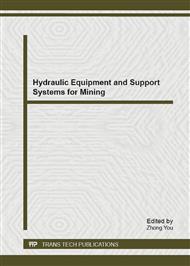p.123
p.127
p.131
p.135
p.139
p.143
p.147
p.151
p.156
Application of VOF Interfacial Tracking Model to Condensation Heat Transfer
Abstract:
Condensation heat transfer used to the condenser as an important way of heat transfer is a phenomenon that involves flowing and heat and mass transfer of both gas and liquid phases. Thus, the development of its numerical prediction helps to the design of the condenser. At the present work, a VOF model was used to numerically simulate condensation heat transfer in a V-shape tube, obtaining volume fraction of vapor, location of liquid film and parameters of heat transfer. Results show that the VOF model may predict flow pattern of condensation and mass flux of condensation of vapor on the liquid film well. From computations, mass flux of condensation of vapor on the liquid film increases along vapor flowing, however, it tends to steady at the back part of the condenser tube. Flow pattern of condensation develops from annular flow at the inlet of the condenser tube to stratified flow, finally to plug flow at its back part. Velocity decreases along the tube length.
Info:
Periodical:
Pages:
139-142
Citation:
Online since:
December 2012
Authors:
Price:
Сopyright:
© 2013 Trans Tech Publications Ltd. All Rights Reserved
Share:
Citation:


